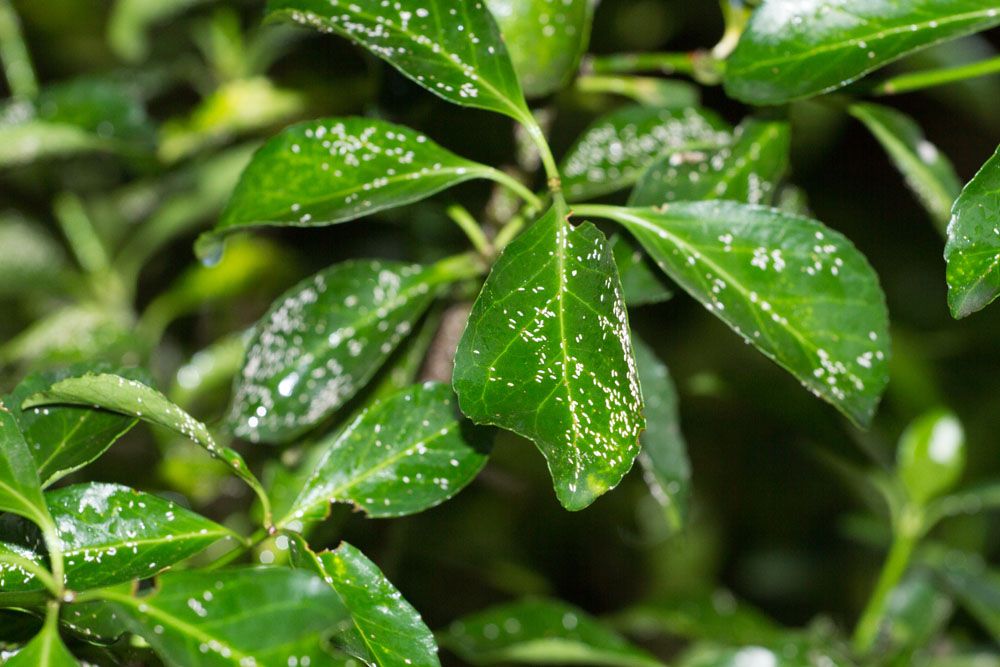
Euonymus Scale – Unaspis euonymi
Euonymus Scale: Appearance, Territory, Damage and Life
Latin name: Unaspis Euonymi
Appearances: Adult female: body is grayish-brown, covering is shaped like an oyster shell, tapering to a point anteriorly and having an oval prosomal plate (only visible with covering removed) With five abdominal segments and a pear-shaped, yellow body, it lacks appendages and eyes. Adult Male: White, oblong or elongate covering with a middorsal and two lateral ridges; head yellowish-brown; body pale orange with wings (only seen when covering is removed). Nymph without any covering, pale yellow to orange. On the Euonymus stems, the females are spiky and oblong in shape. The males are white, elongate, and slender. These are located on plant life.
Host plants: Numerous euonymus species and variants are attacked by this scale. Other plants that it can occasionally be found on include holly, hibiscus, camellia, celastrus, ivy, and ligustrum.
Territory: They can occur anywhere via shipments of cultivated and ornamental plants, but they are most commonly seen in North America’s eastern and southeastern regions.
Damage insect caused: Euonymus scale frequently goes unnoticed until it has done significant harm. Yellow or white dots appearing on the foliage is one sign of a light attack. The host plant’s stems and leaf veins are often where the female scales are located. The covering of the smaller male scales, on the other hand, might occasionally “whiten” the entire plant. When this happens, the leaves of the plants may fall off, and occasionally a typically green plant turns naked by summertime. If not addressed, heavily affected plants typically die. Plants that are growing close to structures appear to sustain greater damage than those that are growing in open spaces.
Life cycle and habits: Scales of euonymus overwinter as fully developed, fertile females. Eggs are laid in the early spring under the shielding scale. Over a period of 2 to 3 weeks, eggs hatch in late May to early June. To find food, crawlers move to the leaves. They might also be carried by the wind to other host plants that are weak. Midway through July, a second generation might emerge. They quickly settle in and start eating. In the months of July, August, and September, there are three extra generations.
